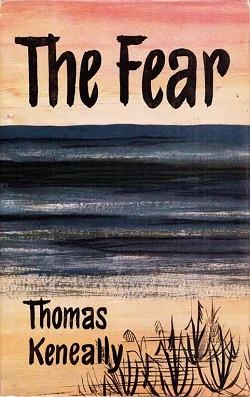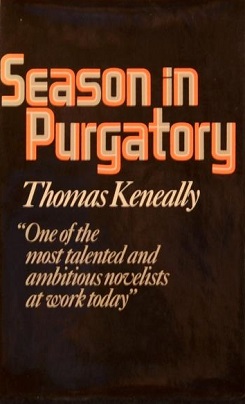
Thomas Michael Keneally, AO is an Australian novelist, playwright, essayist, and actor. He is best known for his non-fiction novel Schindler's Ark, the story of Oskar Schindler's rescue of Jews during the Holocaust, which won the Booker Prize in 1982. The book would later be adapted into Steven Spielberg's 1993 film Schindler's List, which won seven Academy Awards, including Best Picture.
The Miles Franklin Literary Award is an annual literary prize awarded to "a novel which is of the highest literary merit and presents Australian life in any of its phases". The award was set up according to the will of Miles Franklin (1879–1954), who is best known for writing the Australian classic My Brilliant Career (1901). She bequeathed her estate to fund this award. As of 2016, the award is valued at A$60,000.
The Age Book of the Year Awards were annual literary awards presented by Melbourne's The Age newspaper. The awards were first presented in 1974. After 1998, they were presented as part of the Melbourne Writers Festival. Initially, two awards were given, one for fiction, the other for non-fiction work, but in 1993, a poetry award in honour of Dinny O'Hearn was added. The criteria were that the works be "of outstanding literary merit and express Australian identity or character," and be published in the year before the award was made. One of the award-winners was chosen as The Age Book of the Year. The awards were discontinued in 2013.

Confederates is a 1979 novel by the Australian author Thomas Keneally which uses the American Civil War as its main subject matter.

An Angel in Australia is a 2002 novel by Thomas Keneally.
The Children's Book of the Year Award: Picture Book has been presented occasionally since 1955 by the Children's Book Council of Australia (CBCA).
The Children's Book of the Year Award: Older Readers has been presented annually since 1946 by the Children's Book Council of Australia (CBCA). Note: from 1946 to 1986 this award was known as "Book of the Year".

A Very Private War is a 1980 novel by Australian writer Jon Cleary about coastwatchers during World War II.

The Fear (1965) is a novel by Australian writer Thomas Keneally. The novel is also known by the title By the Line.
This article presents a list of the historical events and publications of Australian literature during 1974.

Season in Purgatory (1976) is a novel by Australian author Thomas Keneally.
"Daphne Laureola" is a 1965 Australian television play based on Daphne Laureola by James Bridie. It screened as part of Wednesday Theatre.
"How Do You Spell Matrimony?" is a 1965 Australian television play by Colin Free. It appeared on a double bill as part of Wednesday Theatre with The Face at the Club House Door.
"A Ride on the Big Dipper" is a 1967 Australian television play. It screened as part of Wednesday Theatre and had a running time of one hour.
Seven Little Australians was a 10-part TV series that aired on ABC Television in 1973. The mini-series was based on Ethel Turner's best-selling novel, Seven Little Australians.
This article presents a list of the historical events and publications of Australian literature during 1982.
This article presents a list of the historical events and publications of Australian literature during 1985.
Pirates at the Barn is a 1948 Australian stage play for children. It made its debut in 1948 and was very popular, being performed at the Minerva Theatre in 1949. The cast for that production included Grant Taylor and John Meillion.
The Melody Lingers is a 1935 Australian novel by F. J. Thwaites. It is a sequel to the author's debut novel The Broken Melody (1930).
Jacko is a 1993 novel by the Australian author Thomas Keneally.






